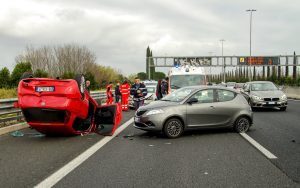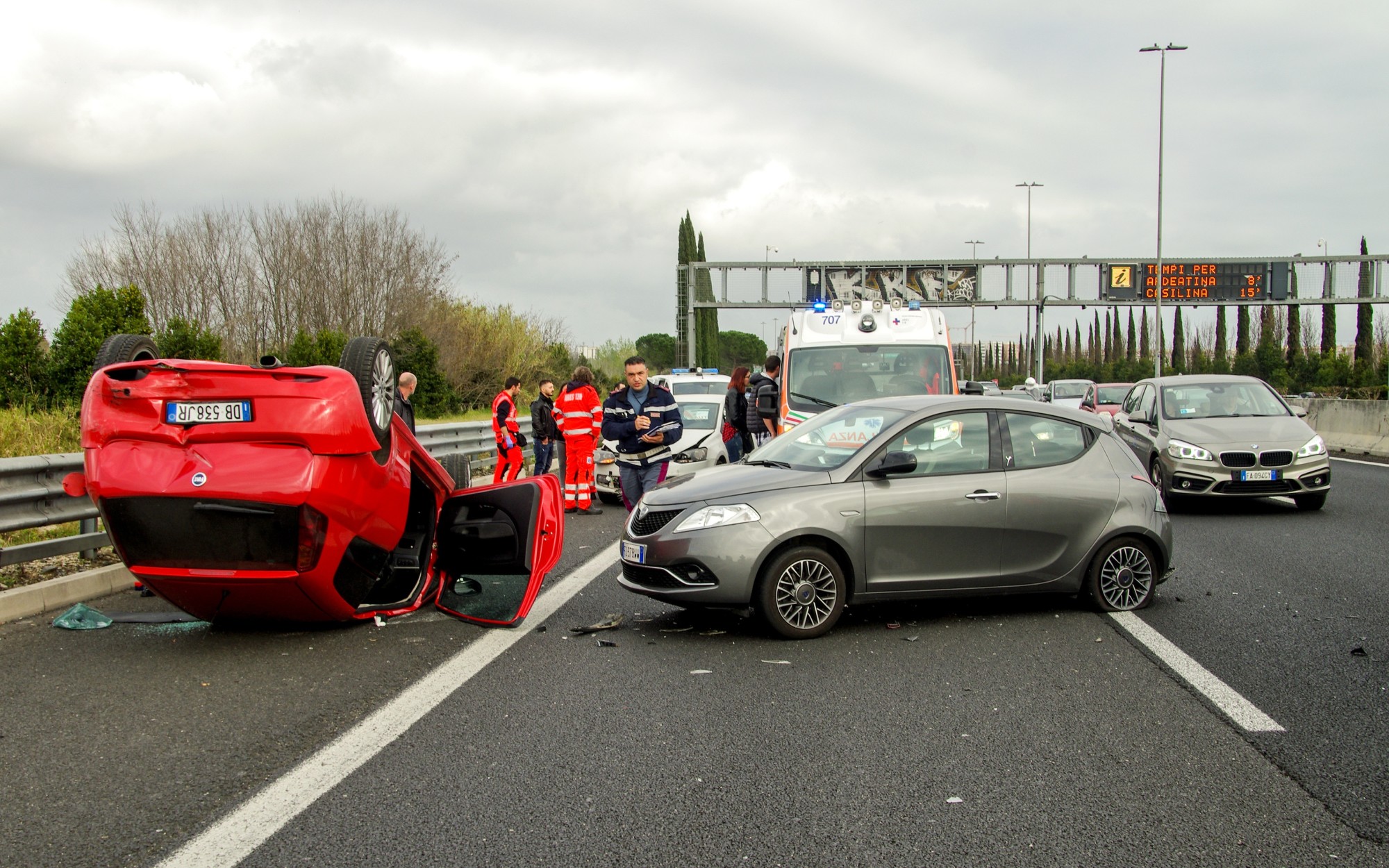
One of the most difficult types of speeches to give is the instructional speech. These are the speeches in which we have information that we would like to teach to our audience. The good news is that more often than not our audience has come to learn what we will be sharing with them. As speakers, researching this topic is of the greatest importance. We need to make sure that we have gathered all of the background information that we will be sharing with our audience. The organization of how we present this information is also important. As an example of how to do this, let’s take a look at how you could make a presentation on car accidents and how to avoid them.
Over 2 million people are injured, disabled, or killed in car accidents in the United States every year.
There are so many reasons accidents happen: distracted driving, poor driving skills, lack of road awareness, and driving under the influence are the most common causes.
You can’t control other drivers’ behavior – so what can you do to reduce your risk of being in a car accident?
Knowing the most common types of car accidents and how you can act to prevent them will help reduce your risk of being in an automobile accident. Keep reading to equip yourself with this essential knowledge.
Who Is Most At Risk of Being in A Car Accident?
Newly qualified drivers and teenagers have the highest risk of being in a car accident: a teen is 4 times more likely to be in a collision than a driver with more experience.
However, other factors affect the likelihood of someone being in – or causing – an accident.
If you’re driving tired, or under the influence of alcohol or drugs, you’re significantly increasing your risk and other road users. Over 7,000 fatal accidents could be prevented each year if the drivers had kept their blood alcohol level below 0.08%.
Distracted driving also causes many accidents every year. Noisy children in the back seat or loud music could be all it takes to lose concentration for that vital fraction of a second that causes an accident.
If you eliminate risks like tiredness, distractions, and substances, you’ll improve your chances of reacting quickly to any of the common car accident types road users face.
The Most Common Types of Car Accidents You Could Face
There are several types of automobile accident your vehicle could be in. Here’s what they are and how to reduce your chances of being involved in a collision of each type.
Rear-End Collision
Rear-end collisions happen most frequently at junctions, traffic lights, or stop signs. They also occur on freeways when sudden traffic appears, such as when someone brakes to avoid debris in the road.
Rear-end accidents happen when you – or someone behind you – come up to the back of another vehicle too fast. The hood of the rear car hits the trunk of the car in front. This often means the front car is shunted forward often into a busy junction risking further impact.
Keep your distance from other vehicles and give yourself plenty of time to slow when approaching a junction to minimize your risk of this type of accident.
Junction or T-Bone Impact
A T-bone impact is when the front of one car collides with the side of yours. They happen most frequently at junctions, often when someone leaves a junction too soon. They don’t leave enough space for the car approaching on the perpendicular road to slow safely, causing the impact.
You can avoid this type of collision by making sure you only leave a junction when there is plenty of space between you and the next approaching car. If you’re on the main road and see a car approaching a junction onto your highway, be prepared to slow suddenly if they decide to pull out in front of you.
Head-on Impact
A head-on impact occurs when the hoods of two cars collide. This happens frequently on narrow roads or tracks. They also occur often when a car is stationary and signaling to turn across the oncoming traffic into another junction.
You can avoid these impacts by increasing your awareness of cars waiting to turn in oncoming traffic. If you’re driving on a narrow track, keep your speed low, and be prepared to brake if you see an oncoming car.
Lane Changing or Side-Swipe Accidents
Side-swipe collisions occur when a vehicle misjudges their lane change. They either fail to use their signal or don’t check their blind spot before moving into the next lane.
This means the side of their vehicle collides with the side of your car. It can force your vehicle into roadside barriers or other traffic, too.
Avoid this type of collision by keeping plenty of space between your vehicle and cars in other lanes. You should also always check your blind spot before you move into the next lane.
Total Rollover
Sometimes, a vehicle won’t collide with another vehicle, barrier, or obstacle. Instead, it’ll end up rolling over itself to land either on the roof, on its side, or, in serious accidents, standing back upright after a 360-degree rotation.
These are serious accidents. Being injured in a rollover accident involves multiple short- and long-term injuries, such as whiplash, due to the forces applied to the body during the collision and rotation.
Rollover accidents happen anywhere major force is applied to the vehicle. They could be the result of a major side-swipe impact or caused by a single vehicle going over the side of the road into a ditch or down an incline. Rollovers are also common in high-sided narrow vehicles like trucks, as the center of gravity causes instability.
Rollover incidents happen due to significant speed at the point of collision. Keep to the speed limit at all times and be especially careful driving around corners on roads without barriers.
Single Vehicle Accident
A huge 58% of fatal car accidents involve just one vehicle.
These accidents occur when a car leaves the road and hits an obstacle with such force it causes an impact.
The major causes of single-vehicle impacts are distracted driving, driving under the influence, or bad weather conditions. Wet or icy roads, for example, make it harder for cars to stay on the road due to a lack of friction.
Avoid causing one of these accidents by always driving when you’re feeling refreshed and not tired, without distractions like loud music, and not driving in inclement conditions. If you must drive in snow and ice, check your car over before you drive and fit your snow tires or chains.
How to Stay Confident in the Aftermath of Your Auto Accident
All types of car accidents have one thing in common: they’ll leave you feeling shaken up and anxious. It’s a natural part of our fight-or-flight reaction to a major incident.
However, being able to remain calm after your accident will help you to communicate confidently with emergency and rescue services, other people involved in the accident, and insurance companies.

